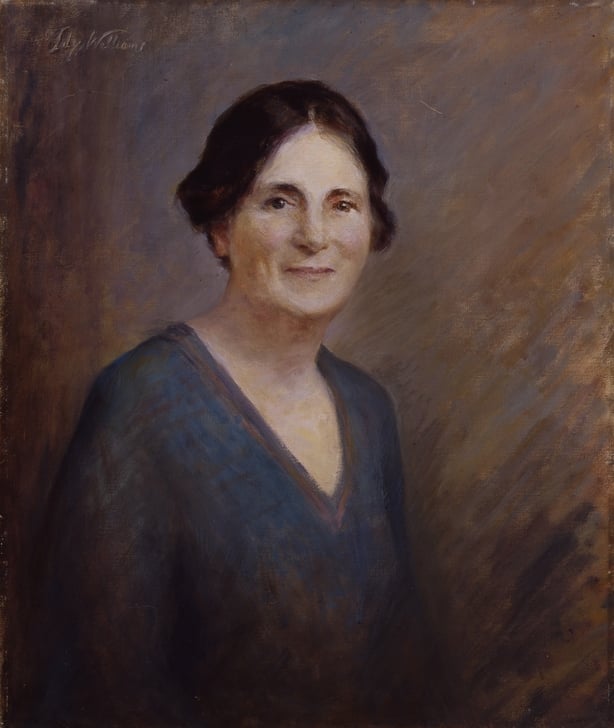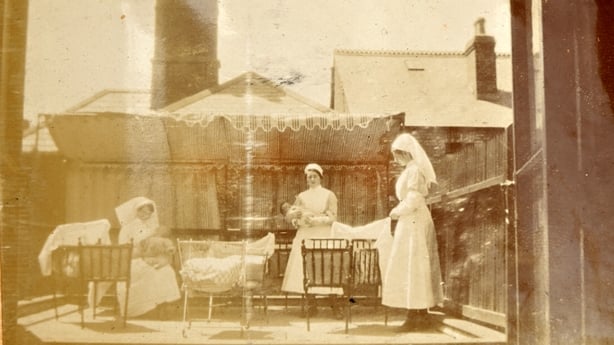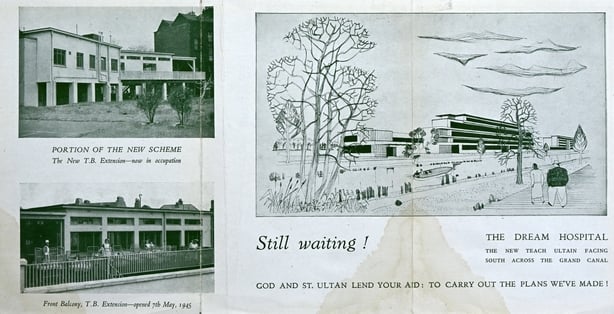Analysis: her diaries tell the story of an innovative and revolutionary activist devoted to the cause of women, workers and Ireland
By Mary McAuliffe, UCD and Harriet Wheelock, RCPI
In 1919, Dr Kathleen Lynn and other women activists, established St Ultan's Hospital for Sick Infants at No 37 Charlemont Street. Starting with just £90 in the bank and two cots, they were responding to the dire need for medical care among the infants, and their mothers, in the Dublin tenements. Life in cold, damp, unhygienic conditions led to very high infant mortality rates, which had been exacerbated by the 1919 flu pandemic.
That year, infant mortality rates in Dublin were 141 per 1000; considerably higher than any other city in Ireland or Britain. Lynn was determined to provide essential services for these families through the new hospital. Teac Ultan, as it was known, would grow over the coming decades and provide essential and innovative medical care for Dublin’s children until it closed in 1984. The archives of St Ultan’s were then deposited in the Royal College of Physicians of Ireland and, in 1997, Lynn’s family donated her diaries to the College.

Lynn’s diaries are among the few eyewitness sources we have for a radical, revolutionary, socialist, and republican woman. She began her diary aged 42, when she had been practicing as a doctor for over 15 years and was already a dedicated suffrage and socialist activist, who was also committed to the fight for Irish freedom. She had been radicalised through her work with militant suffragettes and in the soup kitchens of Liberty Hall during the 1913 Lockout. She encountered James Connolly who regarded her as one of the 'the best of women’, and at his invitation became the chief medical officer of the Irish Citizen Army.
When she began her diary in Easter 1916, her motivation was obvious: she was about to become involved in an event which would change the course of her life. Her entries for Easter week were initially hastily scribbled on scraps of paper, all she had to hand as she moved from her outpost with the Irish Citizen Army at City Hall, to her imprisonment in Ship St Barracks, and later in Kilmainham and Mountjoy Jails.

She later transcribed these entries into notebooks, continuing to keep the diary almost daily until close to her death in 1955. The four decades of her life are covered in nearly one million words, they reveal how she negotiated her own conflicting identities, her journey from moderate to radical politics, her work as a doctor, her activism, her politics, and personal life.
We know much of Lynn the feminist and revolutionary, but the diaries also reveal her dedication to her medical practice and to St Ultan’s. With her partner Madeleine ffrench-Mullen and the mostly female staff, she was determined to provide the best, most up-to-date modern care for her charges. She and ffrench-Mullen travelled to hospitals in the United States, UK, and Europe throughout the 1920s and 1930s seeking information and insight into new paediatric medical practices.

They introduced many innovative approaches to including an electric breast pump, Montessori wards, goats' milk (they kept a small herd of goats at St Ultan’s) and outdoor sunshine wards. Lynn also supported her colleague Dr Dorothy Stopford Price in her research into paediatric TB in the 1930s, and the introduction of the BCG inoculation to Ireland. The value of this work was acknowledged in 1949 when the National BCG Committee was established in the hospital, with Dr Stopford Price as its first chair.
Lynn believed in treating the whole child, today her approach would be regarded as child centred. She believed that holding, cuddling, and hugging the child was as important as the medical approach, and she was rarely seen in the hospital without a child in her arms. She also believed in education as part of care, hence her interest in the Montessori method. She knew all her infant patients by name or nickname and mentions them often in her diaries. When children failed to thrive or died, she mourned them as one of her own. Her devotion to the whole child approach can be seen in her work as a local councillor in Rathmines, in campaigns for better social housing and living conditions for children and their families.

Lynn’s diaries reveal a radical and revolutionary woman devoted to the cause of women, workers, and Ireland. They also reveal a dedicated medical professional determined to deliver the best healthcare for the infants in her care.
One of her most heartfelt wishes was to amalgamate St Ultan’s with Harcourt St. Hospital to create a 150-bed, National Children’s Hospital. She commissioned the architect Michael Scott to design plans for the new hospital, situated beside the canal; it was designed to support best international practice in infant healthcare.
However, opposition from the Catholic Church, who did not want a secular hospital in which it would have little or no say, proved too big an obstacle to someone even as determined as Lynn. Her plan for a National Children’s Hospital never came to fruition. Now, with a sense of restorative justice, we support the call to name the new National Children’s Hospital after this radical, innovative woman doctor. The Kathleen Lynn National Children’s Hospital certainly has a grand ring to it.
The Diaries of Kathleen Lynn; A Life Revealed Through Personal Writing, by Mary McAuliffe and Harriet Wheelock, is available from UCD Press and in bookshops nationwide.
Dr Mary McAuliffe is a historian, lecturer, and Director of Gender Studies at UCD. Harriet Wheelock, is Keeper of Collections at the Royal College of Physicians of Ireland and is responsible for the management of the RCPI Heritage Centre and the development of the collections.
The views expressed here are those of the author and do not represent or reflect the views of RTÉ
